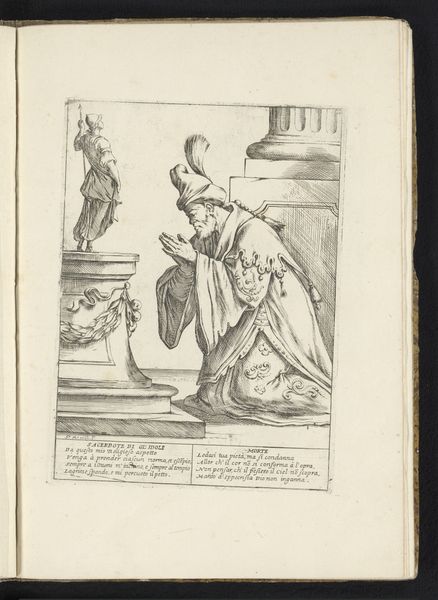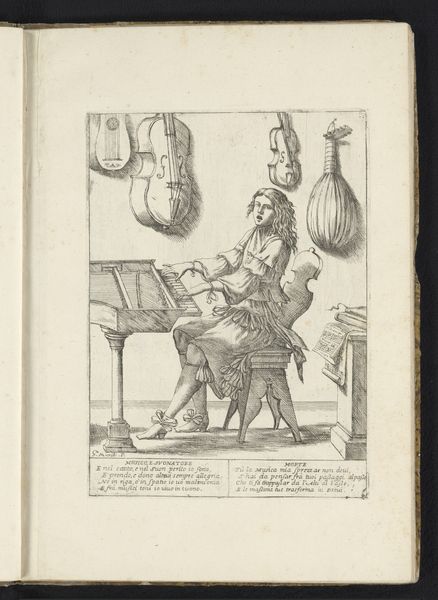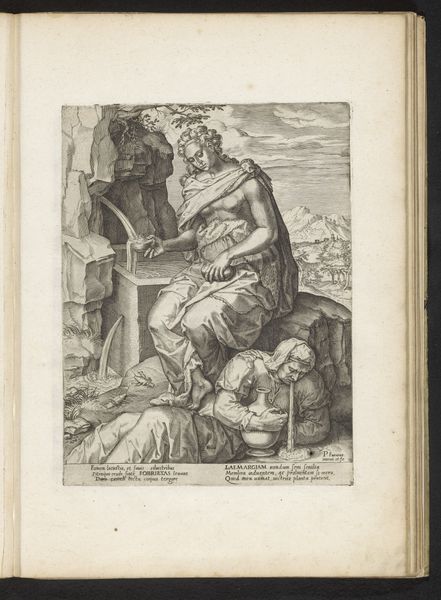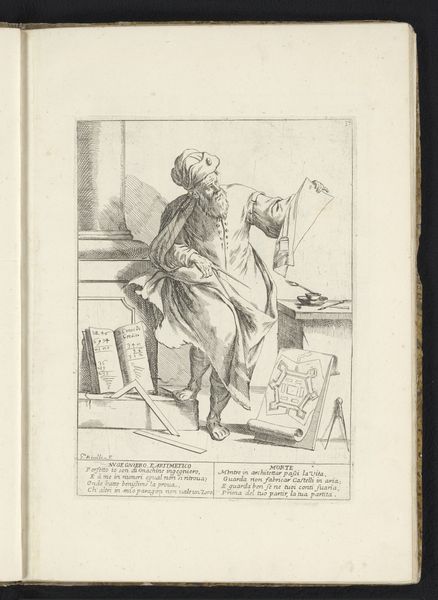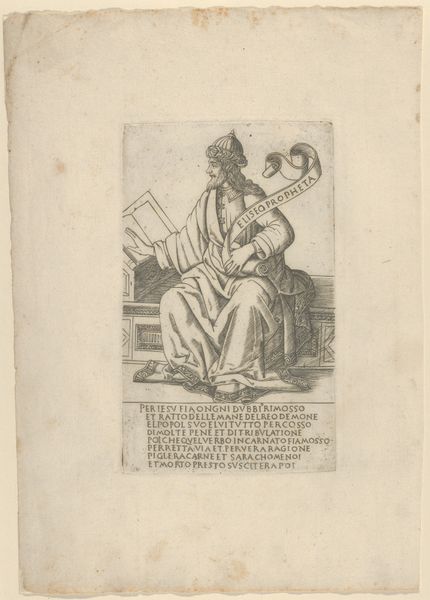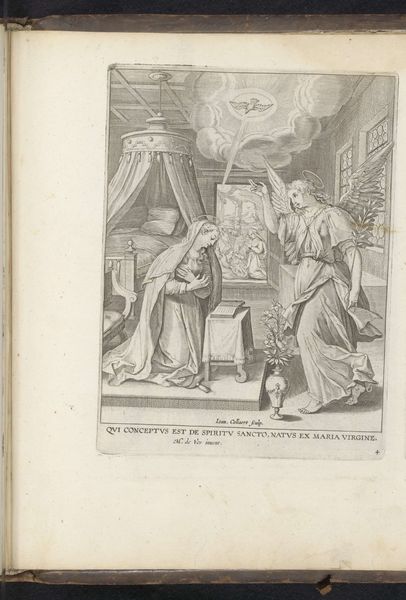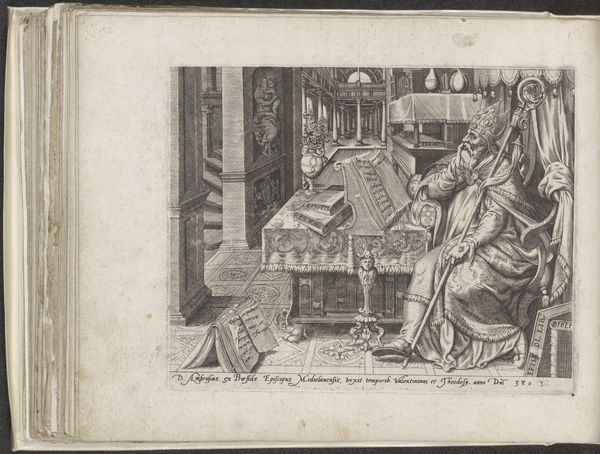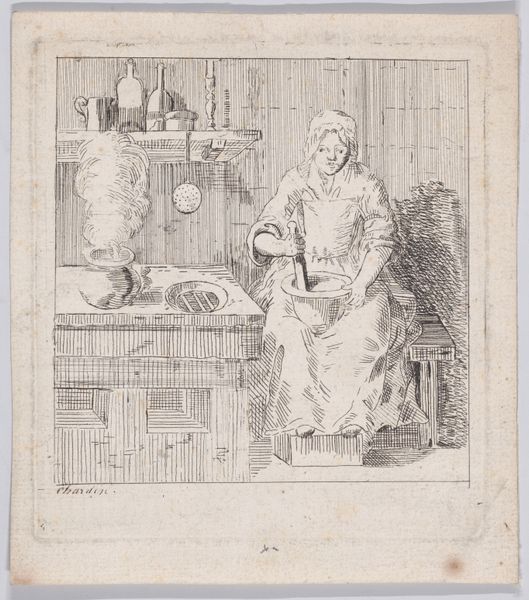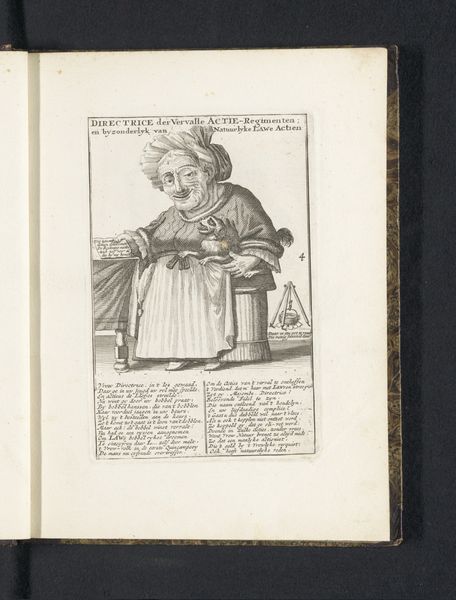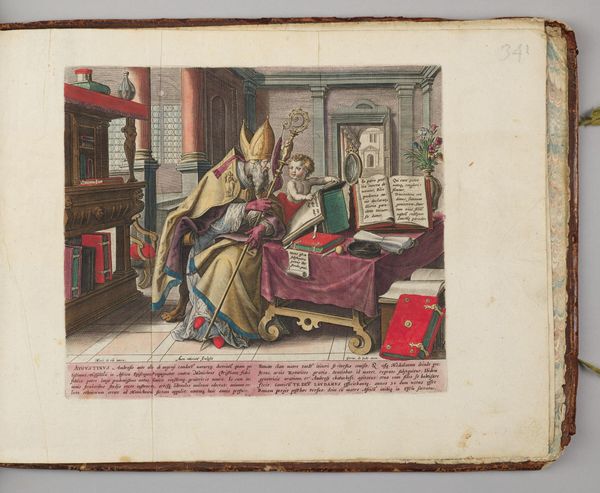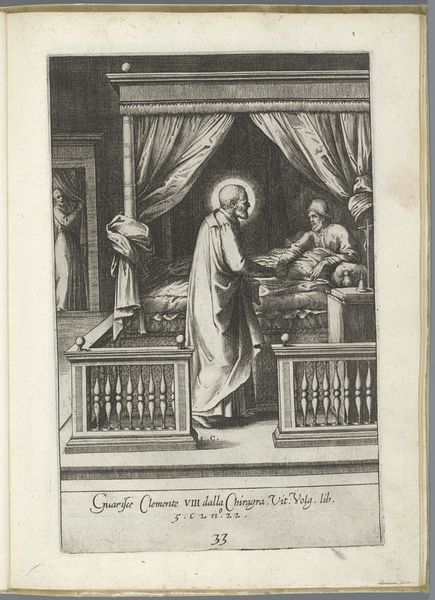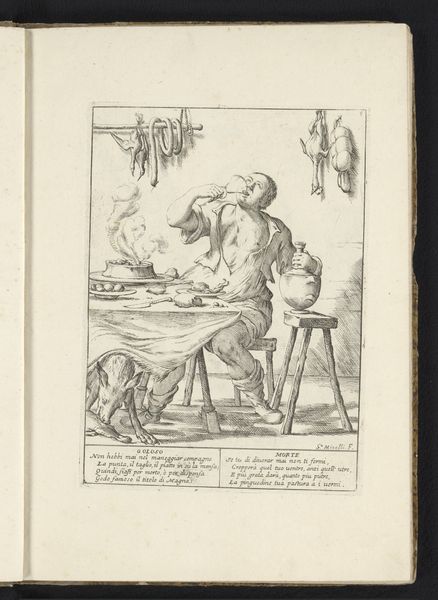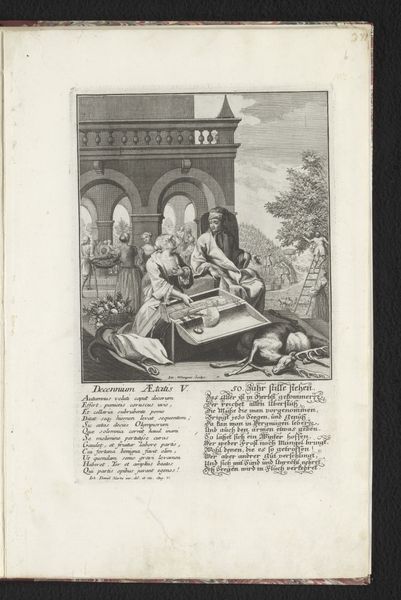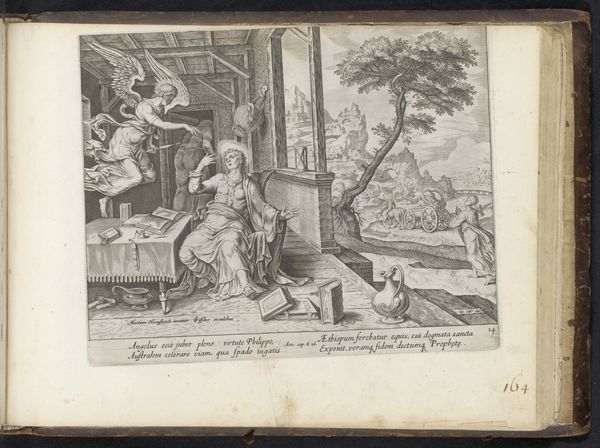
drawing, print, etching, ink, engraving
#
portrait
#
drawing
#
narrative-art
#
baroque
#
pen drawing
#
mechanical pen drawing
# print
#
pen illustration
#
etching
#
figuration
#
ink
#
pen-ink sketch
#
genre-painting
#
italian-renaissance
#
engraving
Dimensions: height 275 mm, width 200 mm, height 394 mm, width 280 mm
Copyright: Rijks Museum: Open Domain
Editor: Here we have Giuseppe Maria Mitelli's etching from 1675, "The Miser." It's incredible how much detail he packs into this small print. There's an unsettling stillness to it, with the central figure so focused on weighing his coins. What stands out to you in terms of its formal qualities? Curator: The strength of this work lies in Mitelli’s compositional balance. Note how the figure, though seemingly slumped, is almost perfectly centered within the pictorial frame. This creates a sense of rigid order, amplified by the precise etching technique and the contrasting light and shadow which define volume in both figure and surrounding objects. It seems the objects in this scene, particularly those bulging bags of coins on the lower right, have been designed as an exploration of volume and texture. Note the repeated use of curved shapes throughout the piece. Do you think they have a significance? Editor: It’s true; those curves definitely draw the eye! Perhaps it suggests the circular nature of greed, an endless accumulation. How would that be interpreted formally? Curator: Formally, the repetition of curves can be seen as a cohesive element, binding the various disparate parts of the scene. They function as a counterpoint to the implied moral failing represented in the imagery, introducing tension that heightens the viewer's experience of the piece. How do you feel about the use of cross hatching? Editor: Now that you mention it, it creates interesting textures… Almost oppressive given the setting. Curator: Exactly. It's in the interplay between these elements that Mitelli's skill truly shines, presenting a seemingly simple scene with formal rigor. Editor: This makes me look at the artwork from a new, less intuitive point of view. It's incredible what the form brings to the narrative. Curator: Yes, that tension is crucial to the viewing. By analyzing the work’s structural elements, it moves the work out of its traditional Renaissance interpretations and into one focused more acutely on form.
Comments
No comments
Be the first to comment and join the conversation on the ultimate creative platform.
